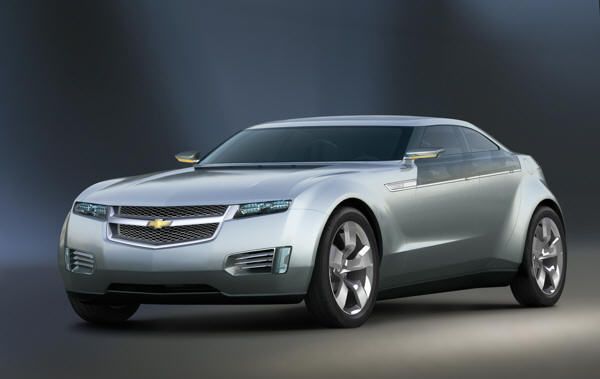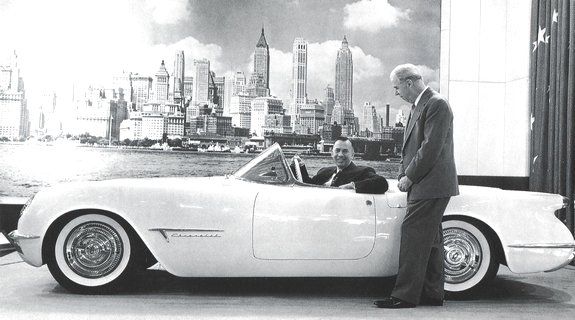Despite repeated promises from General Motors product boss Bob Lutz, the notion that the Chevrolet Volt will be launched in 2010 is mostly a promise to be unmet. General Motors had been talking about selling 60,000 vehicles a year.
Now, they’re trimming that to 10,000 – or less – at start-up. In only five cities.
Of course, they have an excuse. It being GM, they always have an excuse. This time, it’s the need to train dealership mechanics in the new technology and give dealers the time to acquire the new equipment which will be necessary to service these vehicles. According to GM Vice-President of Planning and Research, at its introduction the Volt may be available in as little as five United States cities, and no where else. About more wide distribution, Burns said, “You’d have to set up the service parts in all of those dealerships and train all of those dealers to service the vehicles.”
Burns referred to the 2010 target launch date for the Volt as a “challenge.”
(more after jump)
This news certainly isn’t a selling point for the Volt. GM claims the Volt is superior to other hybrid type vehicles because it is “extended range,” meaning that you can take it for a long drive – Chicago to Des Moines, for example – unlike other electric vehicles which have only limited range. Coupled with indications that the projected $30,000 sticker price may be another dream never to come true – recent reports have put the Volt price at least $5,000 above that target – and the Volt is rapidly beginning to turn into a very visible symbol of GM’s long-standing habit of using the customer to test the technology.
Planning the parts supply and distribution network and training the dealers and their service department personnel was an obvious part of launching the Volt, as it is any new vehicle produced by General Motors. It is equally obvious that General Motors must have recognized that the challenge would be unusually great with a vehicle as radically different from other cars as the Volt.
But the problem is not radically different from that facing the company whenever it introduces a new model. The new Malibu required having a parts inventory entirely different from that needed for the previous model. That’s a challenge GM meets routinely. Technicians may require more extensive training to service the Volt than many other new models, but the GM dealership technician of today is far from being the greasy mechanic of yore. These mechanics already have a sophisticated understanding of computerized systems and diagnostics and modern automotive electrical systems. General Motors didn’t seem to think they couldn’t handle the two-mode or conventional hybrids when those were introduced.
Burns’ comments strongly suggest that General Motors has not been planning, much less implementing, the parts and service support needed for introduction of the Volt because the design of the Volt is still so far from being finalized that planning, at the moment, would be futile.
General Motors has already admitted that handling the accessory electrical power needs of the Volt has proven more difficult than they had anticipated and that an improved method for doing so will be introduced, but not on the first Volts manufactured.
Chevrolet may meet the 2010 deadline for introduction of the Volt, in the most technical sense of the term “introduction.” But, every indication is pointing to production of a car which is, in essence, hand-built and not really ready for prime time.
Of course, that’s almost a GM tradition. Remember the 1953 Corvette? The one displayed at the Motorama at the Waldorf in 1952, and which GM then promised would be a production car the following year? The one that was essentially hand-built to meet that promise, but came only with a "stovebolt" six an Powerglide? And a pricetag almost double the original target, and which was initially limited to sale to celebrities - and didn't sell?
Then again, GM eventually did OK with the Corvette, so maybe this isn't all a sign of bad planning and promises being broken. Maybe it's all part of the strategy.


